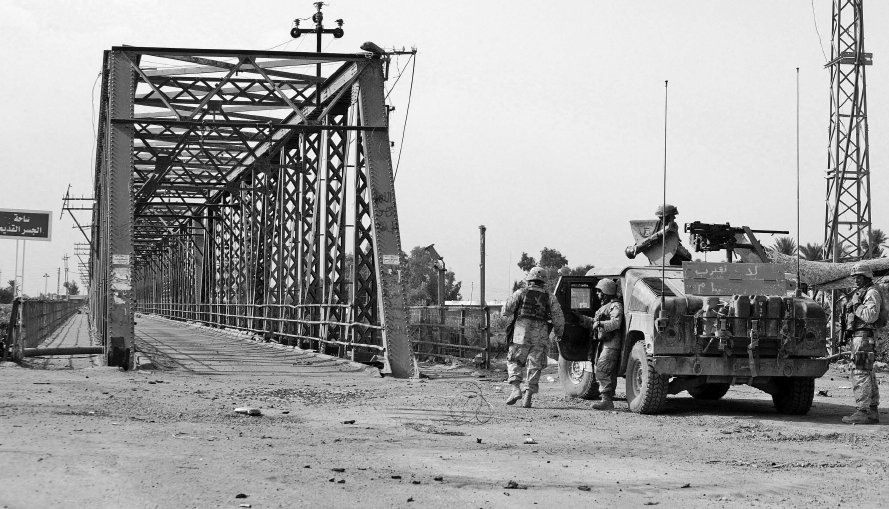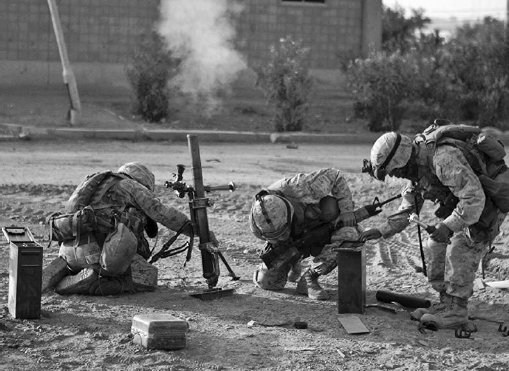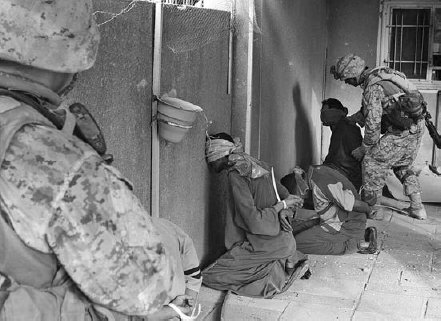My Men are My Heroes (9 page)
Read My Men are My Heroes Online
Authors: Nathaniel R. Helms
Fresno
took Kasal and his Dragon team to many of the world's most exotic ports of call. Australia was nice, Kasal remembers, particularly the girls. He liked Hong Kong the first time he visited there and Thailand every timeâand the Philippines, especially the Philippines, where the young ladies warmed many hearts, including his.
“Thailand and the Philippines were fun,” he says. “I liked them because they were cheap, and I liked Third World countries. You go to Hong Kong or Sydney or any developed country and a city is a cityâfull of people, high prices, cops, cars. One developed country is like the next developed country. Skyscrapers, shopping mallsâthey're all the same.
“You go into a Third World country and you never know what you are going to pop into. In Thailand they had snake shows, king cobra showsâor you could walk down the street with a monkey, ride an elephant, or go on a jungle safari. Third World countries were better.”
In February 1989 Kasal attended Ranger School at Fort Benning, Georgia. The Rangers are the Army's shock troopsârugged, hard-charging soldiers who take things away from a reluctant enemy with surprise and firepower. It is a grueling three-month, four-part course that many soldiers argue is the toughest training course in the Army. Kasal was selected from his battalion for the assignment for his hard work.
“Ranger School impressed me mostly because all the people I saw had problems,” Kasal says. “SEALs had a high dropout rate. Navy SEALs don't do well at Ranger School. They think they are the best and when they get there, they have a problem keeping their egos in check. They are not team players and Ranger School is all about teamwork, leadership, attention to detail. That is what Marines are good at, what Rangers are good at, but SEALs aren't. They are more individual types.
“Army Rangers wear a shoulder tab showing they are Rangers. In the Marine Corps we don't wear anything. It is just more training, another tool to put in your toolbox. Some Marines put a Ranger tab underneath their pocket. I never did. Number one it is not regulation, and number two I am not a Ranger; I am a Marine. If I was going to wear a tab I would wear one that said I am a Marine.
“The Marines at the school formed together to support each other. For example, you are supposed to go down the âslide for life' and yell âairborne.' We would all yell âMarine Corps.' When you do push-ups you are supposed to say, âOne Ranger, Two Ranger.' We would say, âOne Marine Corps, Two Marine Corps.' The instructors would get on us but it actually motivated us. The Ranger instructors expected that; they knew we would never forget we were Marines.”
Not content with merely knowing how to sneak into places, swim, and assault and destroy the enemy from either land or sea, Kasal chose to attend the Marines' eight-week-long Winter Mountain Leadership course in Bridgeport, California, to be a Winter Mountain Leader instructor.
“Winter Mountain instructors learn scout skiing, learn how to be a skiing instructor for a unit. You learn winter survival, winter
bivouacs, and tactics, so if your unit ever deploys to a winter mountain environment, you can be the expert,” he says. “When I got there I had a hard time learning to ski. They told me I was going to be kicked out, sent back without graduating unless I learned how to ski. I tried real hard and became one of the best skiers there.”
The following August and September, Kasal took the Summer Mountain Leader course. He thought it was a little bit easier because it wasn't so cold. He learned rappelling, rock climbing, assault mountain climbing, medevacs, and gorge crossing.
“Assault climbing is where you start at the bottom of the cliff and are the lead climber,” he says. “You climb first setting up the ropes. When you get to the very top, you anchor the rope off so the other Marines will have a rope to use. I loved doing that.”
The school's finale was glacier crossing and ice climbing on 14,000-foot Mount Shasta. Kasal had to march back down the mountain to graduate.
From mountain climbing school, he returned to Pendleton to Delta Co., 1st Battalion, 4th Marines, the famed “China” Marines of old. Kasal was the platoon sergeant of 2d Plt., D Co., 1/4, a sergeant E-5 holding a staff sergeant's position. Things remained essentially the same until 1/4's WESTPAC deployment in August 1990. Although Marines, soldiers, airmen, and sailors were dying in minor skirmishes and quick, testy firefights all over the world, the United States was officially at peace.
On June 20, 1990, the 13th MEU and Battalion Landing Team (BLT) 1/4 deployed for a routine WESTPAC training in the Philippines when Saddam Hussein decided to send his minions for Kuwait's oil. The battalion got the word almost as soon as President George H. W Bush declared Hussein's invasion would never stand.
“We were training in the jungle when we got a call to return to the ship,” Kasal says. “When we pulled out to sea, the Commanding Officer [CO] told us what was going on. He told us that Kuwait was invaded by Iraq, and we were setting sail to go to the Middle East.”
Kasal was thrilled, excited, and eager like everyone else in his battalion. He was still itching for a little payback for the notorious attack on the Marine barracks in Lebanon and all the other humiliations that jihadists had heaped on the United States for 20 years. It was an anxious time for his young Marines.
“Once we got on board ship we had a lot of gear preparation, a lot of packing, a lot of âwhat if' scenarios, a lot of everything. My young Marines would take me to the side and ask me questions,” he says. “They wanted to know what combat was like, what it was like to kill an enemy. I would tell them to depend on their training and their leadership.”
The battalion was destined to stay in the Kuwaiti desert from late August until April 1991. The time in between was an endless cycle of alerts, training, more alerts, and more training until the war finally broke out. Kasal was a sergeant by then, a platoon sergeant, and ready.
“We didn't actually do too much in Desert Storm,” he says. “There was not much combat. It was 100 hours and it was over.”
What with burning oil wells and Iraqis surrendering to anyone they could find, “it was more like a training exercise than a war,” says Kasal. “My young Marines were a little disappointed that we weren't more involved, but in the Marine Corps you go where you are ordered and do what you are told.”
After 11 months of sweat, flies, filth, hot water, and loneliness, the battalion returned to California. By the time they arrived the Desert Storm victory parades were over.
Following Desert Storm Kasal returned to Camp Pendleton and became an instructor at the School of Infantry. He was detailed to be Platoon Commander in 1st Platoon, Charlie Co., Infantry Training Battalion.
The training ran in six-week cycles. Every 43 days Kasal gathered up another group of fresh-faced Marines eager to learn from the old salts.
“My job was basically to train them,” he says. “I would get them up in the morning, take them to chow, get them from Point A to Point B, and then bed them down at night. The job is similar to drill instructing, except you're not always yelling at them. You train them and motivate them, put stress on them and discipline them, but they are Marines now.”
Kasal's younger brother, Kevin, was a PFC undergoing training at the SOI when his older brother was pushing troops there. Kevin remembers his brother as a hard-charging troop leader who drilled his Marines mercilessly. Kevin thinks this is where his brother was dubbed Robo-Grunt.
“It spread from there,” Brad Kasal says. “The privates would call me all sorts of stuffâRock Jaw, Captain America, things like that. I would step off for a hump maybe an hour and a half early and take a roundabout wayâthe hilly wayâto get there. I would go up over the ridges and the mountains, come out way over on the other side, and come back just to push the privates harder.
“Every cycle we would take three company hikes led by the CO. We would do a 6-miler, a 15-miler, and a 20-miler. When we would do a 20-mile hike we would always hike past the obstacle course on the way back.”
It was a good place for Kasal to give his tired Marines a little extra motivation.
“That last mile or two is when the privates start dropping out,” he says. “They can't take it anymore. So as they were walking by, I would run the full obstacle course and then climb the rope to motivate the privates and show them that âHey, this ain't that hard. You can make it.' It wasn't normal, and most of the troop leaders didn't do it, but it motivated my Marines.”
In January 1993 while still training troops at the SOI, Kasal was promoted to Staff Sergeant. Now he had three stripes and a rocker, and he was ready to step on the first rung of the ladder to senior status among NCOs. He was ordered to 3/5 Marines as an infantry platoon sergeant, his home from August 1993 to November 1995.
Career Marines are expected to be well-rounded individuals, as skilled in dealing with the civilian public as they are at commanding troops; so at some point in their careers, they usually get assignments that put them in the unblinking public eye. The Marine Corps believes recruiting duty is an ideal training ground for such experience. It is duty that Kasal had triedâsuccessfully so farâto avoid. His natural reticence recoiled at the idea of dealing constantly with the public, and he knew that performance on recruiting duty could make or break a career. But during the summer of 1995, he received orders to report for recruiting duty. It would be his lot for the next three years.
Being selected for recruiting duty also snatched away Kasal's opportunity to serve beside British Royal Marines, an honor and privilege reserved for a very select few.
“They needed someone who had been to the Mountain Leadership course, so I was in the process of getting my orders for spending three years overseas with the Royal Marines,” Kasal says.

Fallujah Bridge, January 2005: Leathernecks of 3rd Battalion, 5th Marines secure the infamous bridge where terrorists hanged the bodies of two of the four Americans murdered on 31 March 2004. The bridge was reopened to traffic on 14 November.
U.S. Marine Corps photo by LCpl Michael A. Carrasco Jr.

Mortarmen of 3rd Battalion, 5th Marines raised the elevation and rained 60-mm mortar steel on targets almost within grenade range.
U.S. Marine Corps photo by LCpl James J. Vooris

In the massive sweep through Fallujah, American and coalition forces captured 1,100 terrorists similar to these taken by Marines of Company B, 1st Battalion, 3rd Marines.